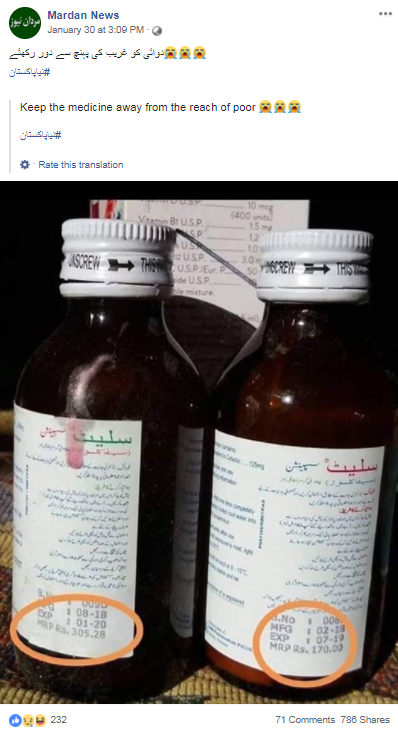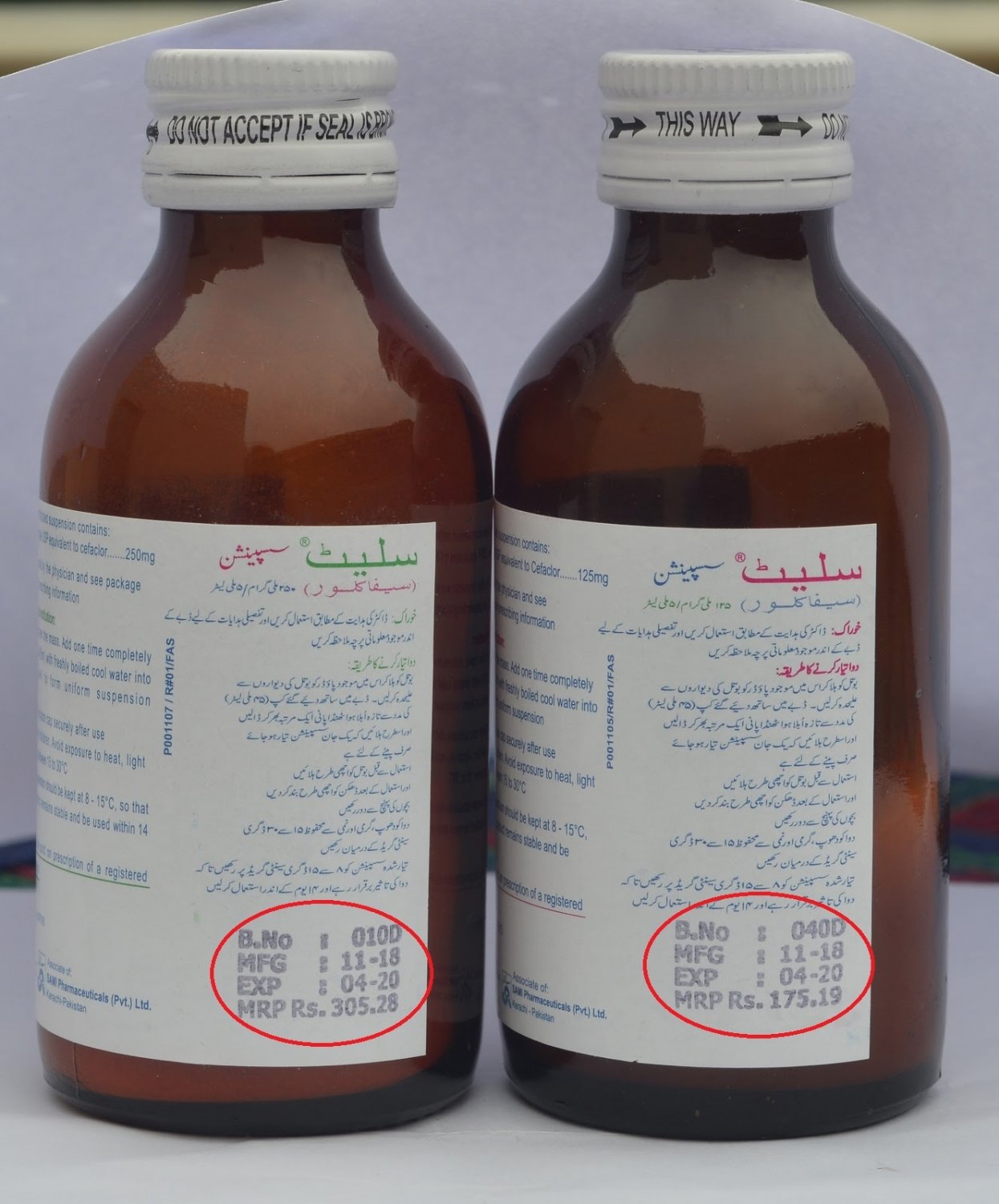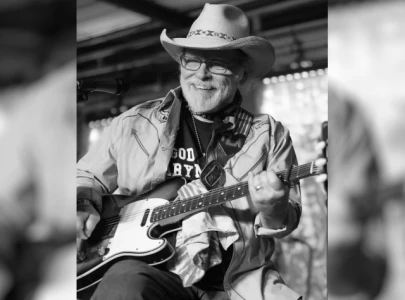
DRAP fixes prices of 1,084 medicines
"The image shows two different amounts of the medicine sold in very similar bottles," says AFP.
The two bottles are marked with prices that have been circled. The one of the left reads Rs305.28 and the one on the right reads Rs170. The caption beneath reads "Keep medicine out of the poor's reach" with three crying face emojis and a #nayapakistan hashtag.
 Screenshot of the viral post
Screenshot of the viral postAFP found and photographed two bottles of Ceflacor sold in an Islamabad pharmacy and found that two different amounts of the medicine are sold in very similar bottles.
One bottle contains 250mg and one contains 125mg of Cefaclor.
 An AFP photo of two Ceflacor bottles sold in Islamabad in January
An AFP photo of two Ceflacor bottles sold in Islamabad in JanuaryAFP also calculated the rise in prices according to the change in bottles manufactured in February 2018 and those manufactured in November 2018.
The price of the 125mg bottle of Ceflacor increased by 3 per cent.
There has been a rise in medicine prices, but not due to the change in government, Pakistan's Drug Regulatory Authority said in a press release issued in January 2019.
DRAP approves 15% increase in medicine prices
“According to a spokesman of Drug Regulatory Authority of Pakistan prices of different medicines has been increased by 9 to 15 percent. This price increase in medicine was inevitable due to different reasons,” the press release says.
The body identifies the Pakistani rupee's depreciation against the US dollar as one of the reasons for this increase in price.
“Similarly there has been an additional burden on the pharmaceutical industry due to the price increase in utility prices (which include gas and electricity). Moreover, additional duties have also increased. There have been increases in the salaries of employees. Most of Pakistan's pharmaceuticals are imported from China. Due to the closure of more than half of industry in China due to environmental reasons, raw material prices have increased two-fold,” the press release said.

1724238420-0/Untitled-design-(3)1724238420-0-165x106.webp)

1731678234-0/pete-(1)1731678234-0-165x106.webp)












COMMENTS
Comments are moderated and generally will be posted if they are on-topic and not abusive.
For more information, please see our Comments FAQ